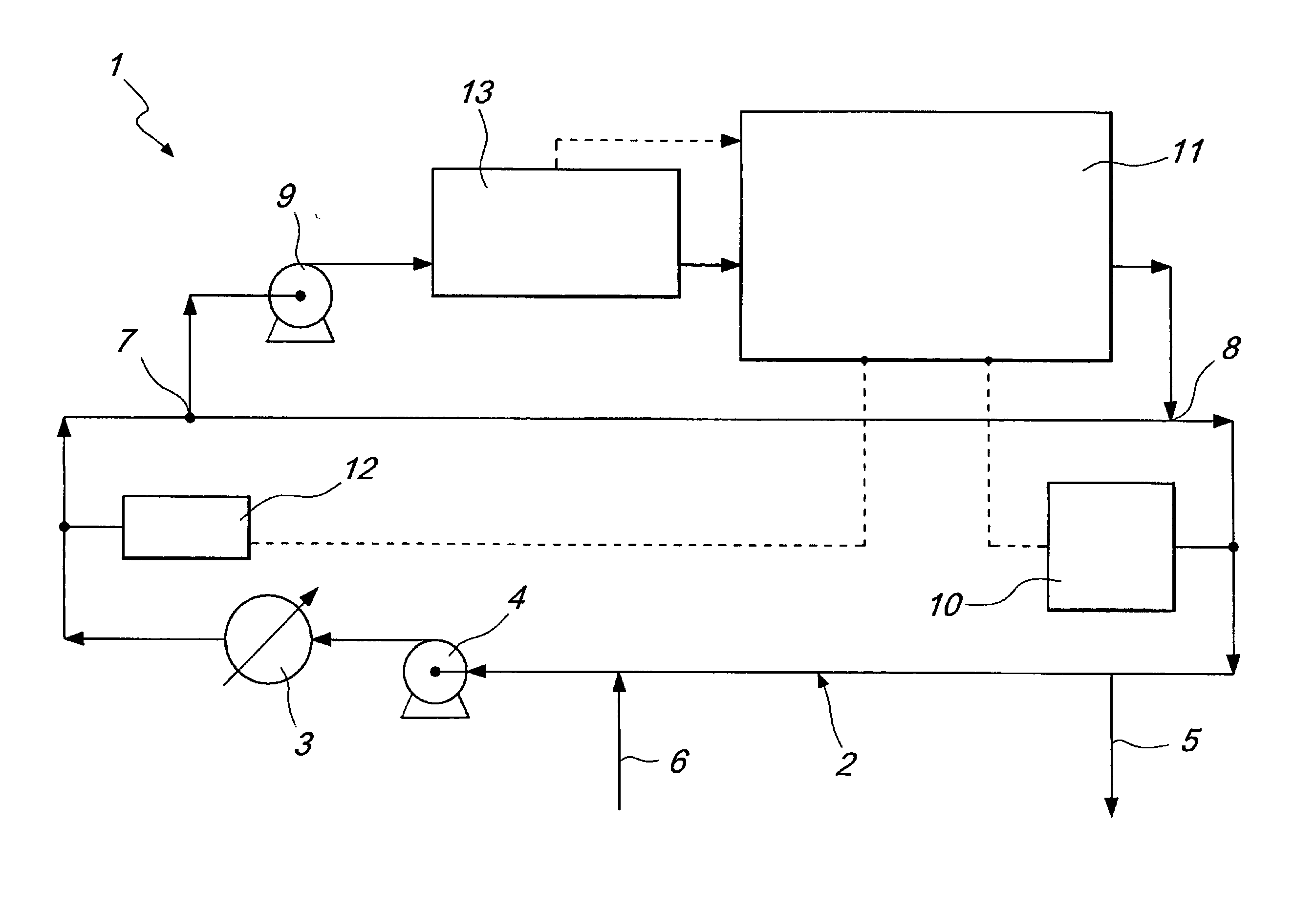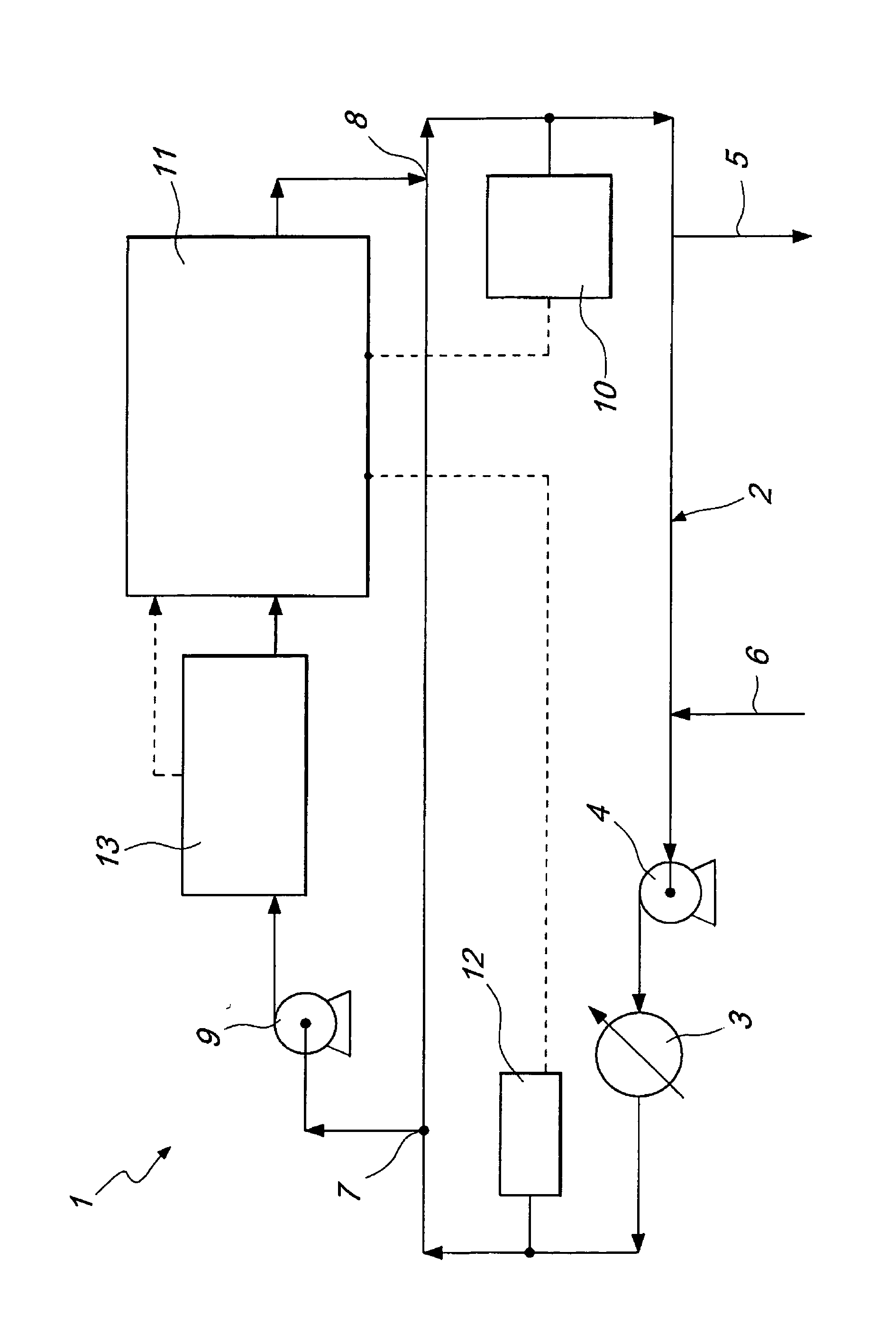Method and apparatus for disinfecting hot water
a technology of hot water and disinfection apparatus, which is applied in the direction of specific water treatment objectives, water treatment parameter control, waste water treatment from bathing facilities, etc., can solve the problems of destroying the effectiveness of such methods, affecting the safety of use, so as to achieve reliable and safe methods
- Summary
- Abstract
- Description
- Claims
- Application Information
AI Technical Summary
Benefits of technology
Problems solved by technology
Method used
Image
Examples
Embodiment Construction
[0034]After extensive research, the present inventors have determined an actual inactivation of the bacterial load in hot water at the temperatures at which the risk of Legionella proliferation is highest.
[0035]Rigorous experimental research has allowed the present inventors to also ascertain that monochloramine acts in depth on the biofilm, eliminating microbial contamination.
[0036]We observed the effectiveness of the treatment with monochloramine in hospitals, where analyses would find Legionella loads and high loads of total active biomass, which ranged between 15 and 20 pgATP / ml, at the sinks and showers.
[0037]By keeping a constant value of 2 ppm of monochloramine, directly injected in the hot water circuit, without initial shock, those values dropped below 1 pgATP / ml, remaining stable over time.
[0038]At the same time, the Legionella load, initially 106 ufc / l, dropped to less than 1000 ufc / l and in many cases to less than 100 ufc / l.
[0039]The biofilm also underwent a significant ...
PUM
| Property | Measurement | Unit |
|---|---|---|
| temperature | aaaaa | aaaaa |
| temperature | aaaaa | aaaaa |
| concentration | aaaaa | aaaaa |
Abstract
Description
Claims
Application Information
 Login to View More
Login to View More - R&D
- Intellectual Property
- Life Sciences
- Materials
- Tech Scout
- Unparalleled Data Quality
- Higher Quality Content
- 60% Fewer Hallucinations
Browse by: Latest US Patents, China's latest patents, Technical Efficacy Thesaurus, Application Domain, Technology Topic, Popular Technical Reports.
© 2025 PatSnap. All rights reserved.Legal|Privacy policy|Modern Slavery Act Transparency Statement|Sitemap|About US| Contact US: help@patsnap.com


